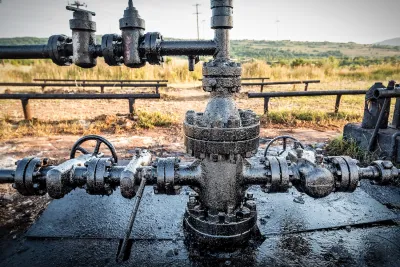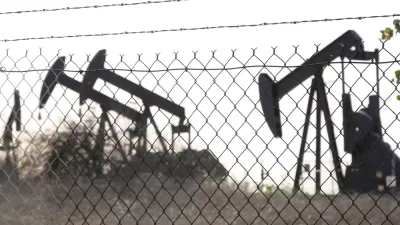A new USGS study reveals that more than half of the nation’s documented orphan wells lie within aquifers supplying the vast majority of U.S. groundwater, posing widespread risks of contamination from aging, unplugged infrastructure.

A new study by the U.S. Geological Survey offers the first national geospatial analysis of how orphaned oil and gas wells — unplugged and ownerless — may threaten major aquifers across the United States. Researchers examined over 117,000 documented orphan wells and found that more than half are located within aquifers that supply 94 percent of the country’s groundwater, raising serious concerns about contamination from aging, failure-prone infrastructure.
The study highlights specific regions at high risk, including Pennsylvania and the broader Appalachian basin, where many of the country’s oldest wells were drilled and where well casing failures are more likely. Gulf Coast aquifers, which include contamination-prone wetlands and open water areas, and densely drilled areas of California’s Central Valley and coastal zones also emerged as high-vulnerability zones. In central Oklahoma, the Ada-Vamoosa aquifer has the highest concentration of orphan wells per square mile.
Researchers recommend that policymakers and groundwater managers use this mapping as a tool to prioritize monitoring, remediation, and further local investigations. With tens of thousands of additional orphan wells added to federal datasets in recent years — and more being discovered — the threat to drinking water sources is growing. The findings underscore the need to accelerate well-plugging efforts and consider groundwater protection as a central concern in energy transition and land reuse strategies.
FULL STORY: Scientists Map Where Orphan Wells Threaten Aquifers in the U.S.

Planetizen Federal Action Tracker
A weekly monitor of how Trump’s orders and actions are impacting planners and planning in America.

Map: Where Senate Republicans Want to Sell Your Public Lands
For public land advocates, the Senate Republicans’ proposal to sell millions of acres of public land in the West is “the biggest fight of their careers.”

Restaurant Patios Were a Pandemic Win — Why Were They so Hard to Keep?
Social distancing requirements and changes in travel patterns prompted cities to pilot new uses for street and sidewalk space. Then it got complicated.

Maui's Vacation Rental Debate Turns Ugly
Verbal attacks, misinformation campaigns and fistfights plague a high-stakes debate to convert thousands of vacation rentals into long-term housing.

San Francisco Suspends Traffic Calming Amidst Record Deaths
Citing “a challenging fiscal landscape,” the city will cease the program on the heels of 42 traffic deaths, including 24 pedestrians.

California Homeless Arrests, Citations Spike After Ruling
An investigation reveals that anti-homeless actions increased up to 500% after Grants Pass v. Johnson — even in cities claiming no policy change.
Urban Design for Planners 1: Software Tools
This six-course series explores essential urban design concepts using open source software and equips planners with the tools they need to participate fully in the urban design process.
Planning for Universal Design
Learn the tools for implementing Universal Design in planning regulations.
Heyer Gruel & Associates PA
JM Goldson LLC
Custer County Colorado
City of Camden Redevelopment Agency
City of Astoria
Transportation Research & Education Center (TREC) at Portland State University
Camden Redevelopment Agency
City of Claremont
Municipality of Princeton (NJ)





























